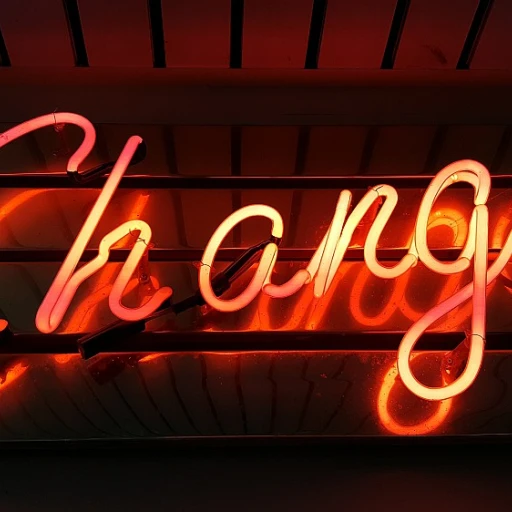The Importance of Organizational Culture in Employer Branding
The Integral Nature of Cultural Assessment for Employer Branding
When we dive into the depths of employer branding, the pivotal role of organizational culture becomes evident. A company is essentially a reflection of its culture, with its norms, values, and behavioral styles acting as a beacon for potential employees. The effectiveness inventory of culture not only dictates internal relations but also public perception.
Organizations with a strong cultural identity tend to have a more defined brand in the job market. The current and ideal states of organizational culture play a significant role in employee attraction and retention. A comprehensive culture inventory helps organizations understand where they stand and the direction needed to align with their employer branding goals.
Leadership is a cornerstone in shaping this organizational culture. Leadership styles directly impact how culture is perceived and lived by employees. Effective leaders can guide culture change that dovetails with the company's branding aspirations. As leadership designs a preferred culture that fits long-term goals, it's vital to ensure that the company culture strengthens the overall brand image.
Ultimately, the role of human capital cannot be understated. Teams and individual members each contribute to the larger cultural mosaic of an organization. The best tech companies, highlighted for their strong cultures and branding, often excel in integrating culture into every facet of organizational life.
What is an Organizational Culture Inventory?
Defining the Organizational Culture Inventory
The Organizational Culture Inventory (OCI) is a comprehensive tool designed to assess and understand the underlying culture within an organization. It plays a crucial role in identifying the current and ideal culture by evaluating the behavioral norms and expectations that influence how employees interact and perform. This inventory provides insights into the organisational culture, which is essential for aligning with employer branding strategies.
Components of the Culture Inventory
At its core, the OCI examines various aspects of an organization's culture, including leadership styles, team dynamics, and the norms that guide employee behavior. By conducting a thorough culture assessment, organizations can identify discrepancies between their current culture and their preferred culture. This understanding helps in crafting effective change solutions to bridge the gap, ultimately enhancing organizational effectiveness.
Benefits of Using the OCI
The OCI is not just a tool for assessment but a strategic asset for long-term organizational growth. By providing a clear picture of the current culture, it enables organizations to plan and implement culture change initiatives that align with their goals. This alignment is vital for maintaining a strong employer brand, as it ensures that the organizational culture supports the values and image the company wishes to project.
Furthermore, the OCI helps in identifying areas where leadership and team members can improve their interaction and collaboration, fostering a more cohesive and productive work environment. This, in turn, enhances the overall employee experience, which is a critical component of successful employer branding.
For organizations navigating the complexities of remote work and training, understanding the nuances of their culture through the OCI can be particularly beneficial. It provides a framework for addressing challenges and optimizing remote work strategies, as discussed in navigating the hurdles of remote work in training and development.
Methods for Conducting an Organizational Culture Inventory
Conducting an Effective Culture Assessment
Conducting an organizational culture inventory is a critical step toward strengthening employer branding. This culture assessment provides a snapshot of the current organizational culture and helps identify the ideal culture that an organization aspires to achieve. The inventory evaluates behavioral norms, leadership styles, and the overall corporate culture, setting a foundation for strategic planning. Successful implementation begins with selecting an appropriate assessment tool. One widely used model is the Organizational Culture Inventory (OCI), developed by Human Synergistics. The OCI offers valuable insights into how organizational members perceive their current environment and what they consider the ideal environment for optimizing organizational effectiveness. This assessment contrasts current culture with the preferred culture, highlighting areas requiring attention. Another vital aspect of the culture inventory is engaging team members. Leaders should strive to involve everyone from top leadership to employees in the assessment process. This engagement ensures a comprehensive understanding of the organizational culture and fosters a sense of ownership toward change. When all organizational members participate, it helps bridge gaps between current and preferred culture. Additionally, data-driven approaches should be employed. Utilizing quantitative and qualitative data is crucial to capture the essence of the organization’s culture accurately. Surveys, interviews, and focus groups can all play integral roles in painting a vivid picture of the organization's cultural landscape. By applying these methods, organizations can better align their strategy with their cultural aspirations—leading to desired culture change. This congruence enhances employer branding efforts, signaling to potential and current employees that the organization values its cultural norms and is committed to fostering an environment that supports both organizational and individual goals. For more detailed insights, check out how employee experience directly impacts employee engagement at Employer Branding Trends.Aligning Organizational Culture with Employer Branding Goals
Aligning Culture with Branding Goals: A Strategic Approach
In the realm of employer branding, aligning organizational culture with branding goals is a crucial step. The culture inventory, or OCI, serves as a foundational tool in this alignment process. By assessing the current organizational culture, companies can identify gaps between their existing culture and their ideal culture. This assessment is essential for understanding how leadership styles and behavioral norms impact the organization's brand perception.
One effective method to achieve alignment is through a comprehensive culture assessment. This involves evaluating the current culture and comparing it to the preferred culture, often referred to as the ideal culture. The assessment provides insights into the organizational effectiveness and highlights areas where culture change is necessary.
Leadership plays a pivotal role in this process. Leaders must embody the cultural values they wish to promote, setting an example for team members. By fostering a culture that aligns with the organization's branding goals, leaders can drive long-term change solutions that resonate with employees and potential recruits alike.
Moreover, involving employees in the culture change process is vital. When team members feel part of the transformation, they are more likely to embrace the new cultural norms. This participatory approach not only enhances employee engagement but also strengthens the organizational identity.
Ultimately, the alignment of organizational culture with employer branding goals is not a one-time effort. It requires ongoing assessment and adaptation to ensure that the culture remains relevant and effective in achieving the organization's objectives. By leveraging the insights gained from the culture inventory, organizations can create a cohesive and attractive employer brand that stands out in the competitive job market.
Challenges in Implementing Organizational Culture Changes
Obstacle Course on the Path to Cultural Transformation
The path to aligning organizational culture with employer branding goals can be tricky, with roadblocks and obstacles along the way. Cultural change within an organization often meets resistance, as members may be comfortable with the current status quo. Here, we unpack some of the common challenges faced when implementing organizational culture changes. Resistance to ChangeResistance from employees, leadership, and even external stakeholders can present a significant roadblock. When members of an organization resist change, they cling to established norms and behaviors, making it difficult to pivot towards the ideal culture envisioned in the Organizational Culture Inventory (OCI). Building a change-resilient organizational culture requires understanding this resistance and addressing the underlying concerns of employees. Lack of Leadership Commitment
The role of leadership is crucial in steering organizational change. When leadership styles do not align with the desired cultural transformation, it can result in mixed signals and ineffective change initiatives. An organization needs committed leaders to champion cultural assessments and enforce behavior norms that promote the preferred culture. Inadequate Communication
Communication breakdown is another hurdle. Employees need to understand the purpose of the cultural change and how it aligns with broader organizational goals. Without clarity, confusion takes root, leading to dissatisfaction and disengagement. Ensuring open lines of communication and involving employees in the culture change process are vital steps in overcoming this challenge. Resource Constraints
Sometimes, organizations face resource limitations, whether financial, human, or time-based, that impede the implementation of change solutions outlined by an OCI assessment. To tackle this issue, organizations need to allocate sufficient resources to support initiatives aimed at evolving the current culture towards a more effective and harmonious workplace."













